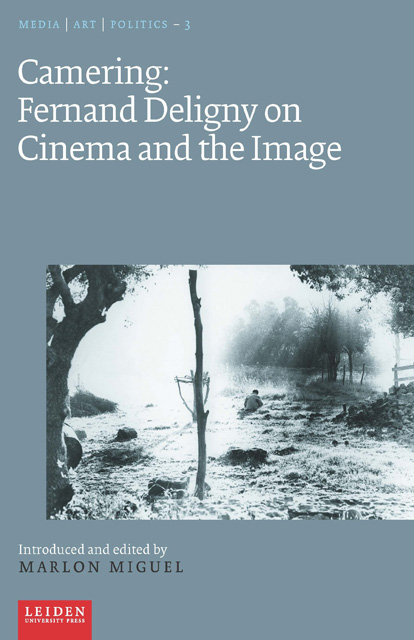Book contents
- Frontmatter
- Contents
- Epigraph [1996]
- Translator’s Note
- General Introduction
- Cinema. Cine-Club [1934]
- The Camera, a Pedagogical Tool [1955]
- He’s Still One of Us [1971]
- Camering [1977]
- Miscreating [1979]
- Camering [1982]
- The Alga and the Fungus [1982]
- Fossils Have a Hard Life: Apropos of the Image [1982]
- Camering [1978-1983]
- The Distinctiveness of the IMAGEs [1988]
- What Is Not Seen (by the Self ) [1990]
- Postface. Minor Gestures, Minor Media
The Camera, a Pedagogical Tool [1955]
Published online by Cambridge University Press: 16 November 2022
- Frontmatter
- Contents
- Epigraph [1996]
- Translator’s Note
- General Introduction
- Cinema. Cine-Club [1934]
- The Camera, a Pedagogical Tool [1955]
- He’s Still One of Us [1971]
- Camering [1977]
- Miscreating [1979]
- Camering [1982]
- The Alga and the Fungus [1982]
- Fossils Have a Hard Life: Apropos of the Image [1982]
- Camering [1978-1983]
- The Distinctiveness of the IMAGEs [1988]
- What Is Not Seen (by the Self ) [1990]
- Postface. Minor Gestures, Minor Media
Summary
The project of realising a documentary film that would be the collective work of the members of La Grande Cordée, regardless of their age, was born of the fact that cinema is a ‘language’ that is all the more important to us educators dealing with adolescents who, for the most part, hardly use written language—or don't at all—for lack of sufficient education, and whose spoken language is limited, not in terms of abundance, but in terms of the exchange value of the words and sentences used. They’re talkative for the sake of talking, and language stupefies or fails them when it comes to making themselves understood.
They thus don't belong to a special category: over the course of their fifteen or seventeen years of existence, they have quite simply drained themselves of a rather cumbersome portion of the most common habits and customs of their time and milieu of life.
Images—photographs from newspapers and magazines, cinema, television— invade the world and deliver a permanent assault on written language. Spoken language doesn't elude the omnipresence of modern techniques of dissemination. I’ll give just one example, that of Christian T., a brave and frail boy of fifteen, who becomes agitated and mute at the slightest question asked of him, and for whom elation is unleashed on hearing a word that allows him to recite a radio slogan. If he hears ‘blanc’, he sings ‘blancheur Persil’ or ‘dents blanches, haleine fraîche’, as happy as a duck in its pond to find himself once again on the commercial radio waves. As for the rest of the slogan, he has his own approach, his thoughts stumbling as he misses rhythms and words.
Let's leave Radio-Luxembourg behind and return to images. Magazine-photos, comic strips, cinema are just the facts. What would be the point of heroically defending the time of the first periodicals, when sentence and word , as specifically human, were queen and king and reigned supreme over title and text? It's likely that the image, the comic, the photo, are also specifically human, and so it's difficult to imagine people losing—little by little—use of the word, and thus thought, due to the abundance of images directly reproduced.
- Type
- Chapter
- Information
- Camering Fernand Deligny on Cinema and the Image , pp. 57 - 62Publisher: Amsterdam University PressPrint publication year: 2022

